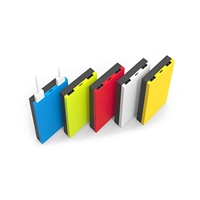
Batteries common to mobile devices and Power Banks are rated on their ampere-hours, measured in milliamps to create non-decimal numbers. The mAh ratings denote capacity for power flow over time....
Batteries common to mobile devices and Power Banks are rated on their ampere-hours, measured in milliamps to create non-decimal numbers. The mAh ratings denote capacity for power flow over time.
Li-Ion & Li-Polymer
Lithium-Ion and Lithium-Polymer batteries are the most common rechargeable cell types found in Power Banks. Lithium-Ion cells are generally cheaper and limited in mAh capacity, while Lithium-Polymer cells can be larger and don't suffer from a memory effect over time.
Efficiency
When power is transferred, there is always loss due to resistance. Power Banks are not able to transfer 100% of their actual capacity to a device, so we factor in this loss when calculating how many times an average device can be charged from a fully powered Power Bank of any given size. Efficiency ratings differ between Power Banks based on their cell type, component quality and environment. Ratings between 80% and 90% are the current industry standard. Beware of suspiciously low-cost options claiming efficiency ratings of over 90%.
Device Depletion
This is the state of the battery in the device you wish to charge. The lower its power, the more a Power Bank has to work to bring it back to life. We consider charging from 20% to 90% a full charge, as the efficiency loss increases beyond these points, leading to wasted charging potential. Going from 5% to 100% can take exponentially more power.
Customer Service
